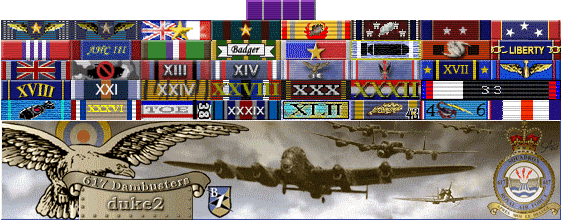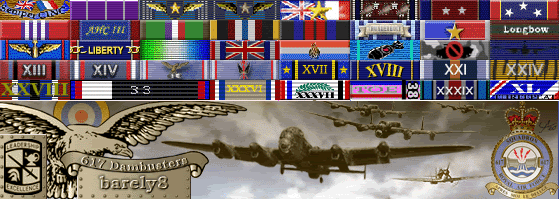Ceilings Landing On, Flies Observations On
How do flies land on the ceiling?
During WWII, Pilot Officer Prune and Flying Officer Prang between Ops undertook an Observational Research Project to establish how it was achieved.
They were unable to agree and came to two different conclusions set out below, who if either was correct?
Theory 1. By Pilot Officer Prune
1.Pilot Officer Prune was of the opinion that the Fly with the throttle set at cruise flew along at the correct height below the ceiling, lowered its under cart, and performed half loop landing off the top.
2.Pilot Officer Spin disagreed, as unless fitted with an altimeter working inversely from the ceiling down instead of from the ground up, the fly would be unlikely to be able to judge the correct radius to avoid nose diving into the ceiling a quarter of the way through the loop.
3.Flying Officer Prang also disagreed as once sufficient airspeed to effect a a good three pointer had been lost the fly would enter an upside down stall, go into an inverted nose dive and have to go around again. As a consequence, most flies, especially the inexperienced, in order to achieve a safe landing would be required to fly a series of vertical circuits of gradually decreasing radius until a successful contact with the ceiling was achieved.
Pilot Officer Noseover also disagreed as landing was in essence a controlled stall onto the ground and it was impossible to stall in an upwards direction. He also added that any landing off the top of a loop would be in the opposite direction to its line of flight adding a significant work load to the already difficult landing procedure.
Theory 2. By Flying Officer Prang
1.Flying Officer Prang was of the opinion that the fly flew along just below the ceiling, executed a half roll and lowered its under cart as it landed using its brakes (sticky feet) to end the landing run and prevent an inverted stall.
2.Pilot Officer Prune disagreed as the strain on the under cart would be tremendous and in most cases shear it off causing an inverted crash landing.
3.Commander Flap also disagreed as after one or two prangs the fly would have no under cart left and would have to be relegated to the fire (fly) dump
Ceilings, Landing on, Flies, Observations on.
- Tzulscha
- Posts: 906
- Joined: Tue May 25, 2004 11:46 pm
- Location: Kalamazoo Mich. (GMT -5)
- Contact:
- Duke2
- Posts: 729
- Joined: Sun Jul 18, 2004 6:54 pm
- Location: Somewhere between, lost and found. :)
- FuelPump
- Posts: 1022
- Joined: Fri Mar 12, 2004 8:11 am
- Location: Perth, Western Australia (GMT +8)
- Contact:
Theory 3.
1). The fly approaches the ceiling, and flies parrallel to it at cruising speed.
2). On contact with the ceiling, the surface friction of the ceiling causes the fly to somersault.
3). If the approach speed, and amount of surface friction match, the fly will execute a longitudinal roll of exactly 180 degrees, whereby the fly is now inverted, with the bottom of the fuselage contacting the ceiling.
4). Air brakes are applied, causing the fly to slow further.
5) At precisely the moment when stall speed (flaps extended) is achieved, the undercarrige is lowered, resulting in contact with the ceiling, and the fly will stick.
1). The fly approaches the ceiling, and flies parrallel to it at cruising speed.
2). On contact with the ceiling, the surface friction of the ceiling causes the fly to somersault.
3). If the approach speed, and amount of surface friction match, the fly will execute a longitudinal roll of exactly 180 degrees, whereby the fly is now inverted, with the bottom of the fuselage contacting the ceiling.
4). Air brakes are applied, causing the fly to slow further.
5) At precisely the moment when stall speed (flaps extended) is achieved, the undercarrige is lowered, resulting in contact with the ceiling, and the fly will stick.
Fuelpump
RAAF
617 Squadron

RAAF
617 Squadron

- barely8
- Site Admin
- Posts: 587
- Joined: Fri Oct 15, 2004 10:07 am
- Location: Indiana
- FuelPump
- Posts: 1022
- Joined: Fri Mar 12, 2004 8:11 am
- Location: Perth, Western Australia (GMT +8)
- Contact:
barely8 wrote:What if the fly was standing in sh!t prior to flight?Will this have an impact on ceiling landings and Fuelpump's item #5?
I know, I know, I'm introducing another variable in this regression equation but I like 'what ifs'.and the fly will stick
Well I would imagine it would depend on the consistency.
I think a "post-curry" type consistency wouldn't do the fly any favours.
But a more "2 weeks backed up and compacted" type may help the fly.
Fuelpump
RAAF
617 Squadron

RAAF
617 Squadron

- Cono
- Posts: 1032
- Joined: Fri Apr 15, 2005 12:48 pm
- Tzulscha
- Posts: 906
- Joined: Tue May 25, 2004 11:46 pm
- Location: Kalamazoo Mich. (GMT -5)
- Contact:
My original thoughts on this were
Flies are obviously capable of maneuvers that are impossible for a normal fixed wing aircraft, for one thing, they are capable of hovering flight.
Could the problem be treated as if they were rotary winged craft?
Since modern (model) helicopters are capable of inverted hovering flight a ceiling landing using a standard fly type undercart could be quite easily accomplished.
A difficulty with this theory arises when it was discovered that flies are NOT capable of inverted hovering flight.
They cannot therefore be treated as rotary winged aircraft, but obviously they are not fixed wing aeroplanes either.
They are an advanced type of ornithopter in fact.
Ornithopter craft of sufficient power to weight ratios (ie. flies) are capable of hovering and fully aerobatic flight. They are however constrained by several factors that bind neither rotary nor fixed wing aircraft.
The first is that since the wing provides both lift and thrust and functions by using airpressure against gravity, it cannot not operate upside down because the fly would simply add lift to gravity and plummet to a painful death.
Unfortunatley I have to go to work now and must cut this short.
There IS actually an answer to this problem as obviously flies land on ceilings.....
Flies are obviously capable of maneuvers that are impossible for a normal fixed wing aircraft, for one thing, they are capable of hovering flight.
Could the problem be treated as if they were rotary winged craft?
Since modern (model) helicopters are capable of inverted hovering flight a ceiling landing using a standard fly type undercart could be quite easily accomplished.
A difficulty with this theory arises when it was discovered that flies are NOT capable of inverted hovering flight.
They cannot therefore be treated as rotary winged aircraft, but obviously they are not fixed wing aeroplanes either.
They are an advanced type of ornithopter in fact.
Ornithopter craft of sufficient power to weight ratios (ie. flies) are capable of hovering and fully aerobatic flight. They are however constrained by several factors that bind neither rotary nor fixed wing aircraft.
The first is that since the wing provides both lift and thrust and functions by using airpressure against gravity, it cannot not operate upside down because the fly would simply add lift to gravity and plummet to a painful death.
Unfortunatley I have to go to work now and must cut this short.
There IS actually an answer to this problem as obviously flies land on ceilings.....

- FuelPump
- Posts: 1022
- Joined: Fri Mar 12, 2004 8:11 am
- Location: Perth, Western Australia (GMT +8)
- Contact:
It's got me stumped.
How many wings does a fly have? Just two wings right?
We know helicopters can fly a loop, because in Blue Thunder, Malcolm MacDowell could do it, but nobody believed him.
Then Roy Scheider worked it out, and shot MacDowell down, which was good, because MacDowell was an arsehole in that movie.
Maybe the fly watched Blue Thunder and worked it out for himself, like Roy Scheider?
How many wings does a fly have? Just two wings right?
We know helicopters can fly a loop, because in Blue Thunder, Malcolm MacDowell could do it, but nobody believed him.
Then Roy Scheider worked it out, and shot MacDowell down, which was good, because MacDowell was an arsehole in that movie.
Maybe the fly watched Blue Thunder and worked it out for himself, like Roy Scheider?
Fuelpump
RAAF
617 Squadron

RAAF
617 Squadron

- Tzulscha
- Posts: 906
- Joined: Tue May 25, 2004 11:46 pm
- Location: Kalamazoo Mich. (GMT -5)
- Contact:
The solution lies in the fact that while an ornithopter cannot fly upside down (at least not under power), in a straight line, it can fly upside down IF it is pushing against centrifugal force.
Therefore in order to land on a ceiling a fly will have to pull a half-loop terminating in contact with the landing surface.
I suppose this means that flies must be considered to have a downward looking radar in order to determine its distance from the ceiling in an inverted position in order to avoid a crash landing.
These are the kinds of thought experiments undertaken by very bored men with nothing better to do...
Therefore in order to land on a ceiling a fly will have to pull a half-loop terminating in contact with the landing surface.
I suppose this means that flies must be considered to have a downward looking radar in order to determine its distance from the ceiling in an inverted position in order to avoid a crash landing.
These are the kinds of thought experiments undertaken by very bored men with nothing better to do...



